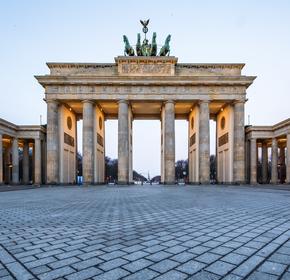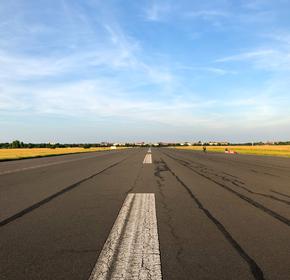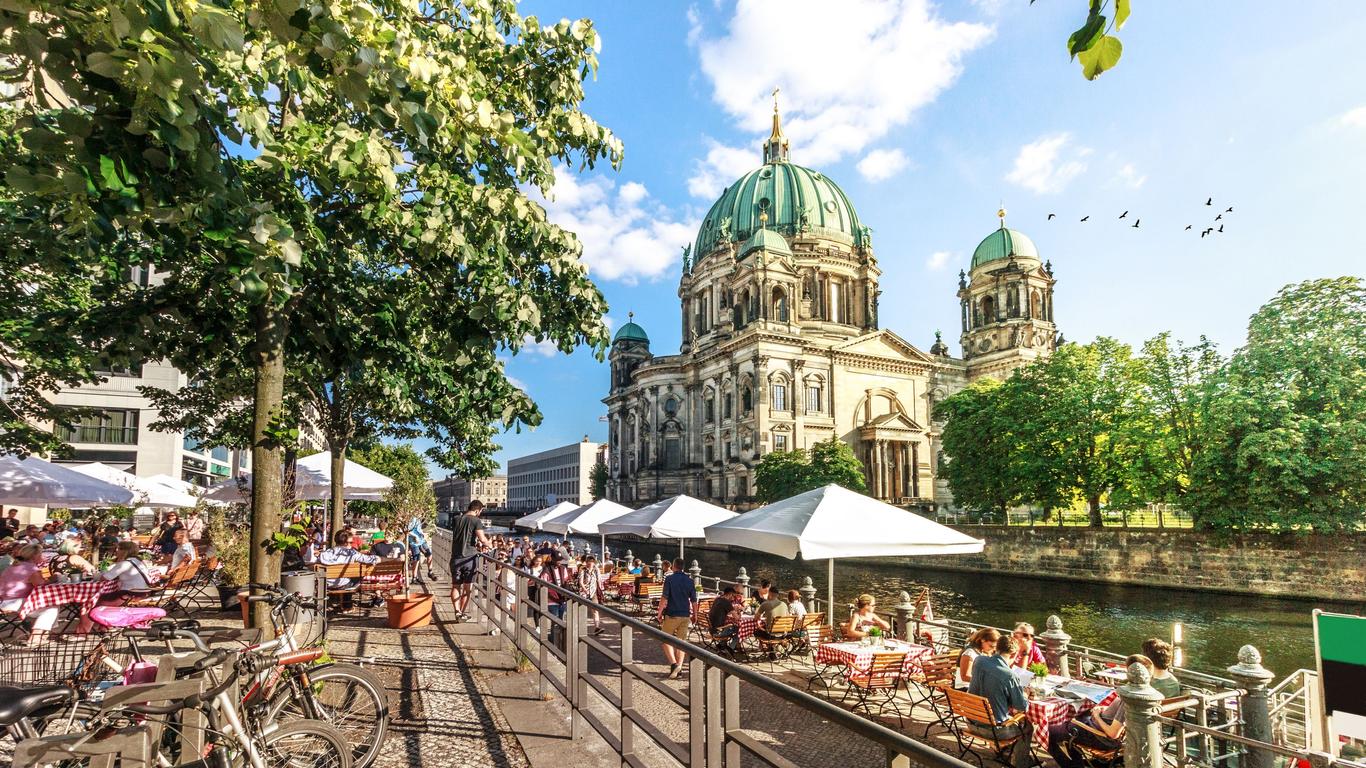
Berlin travel guide
Berlin Tourism | Berlin Guide
You're Going to Love Berlin
Berlin buzzes with an energy unmatched anywhere else in the world. It is a sophisticated metropolis offering chic art galleries, an innovative dining scene, and iconic cultural institutions like the Berlin State Opera.
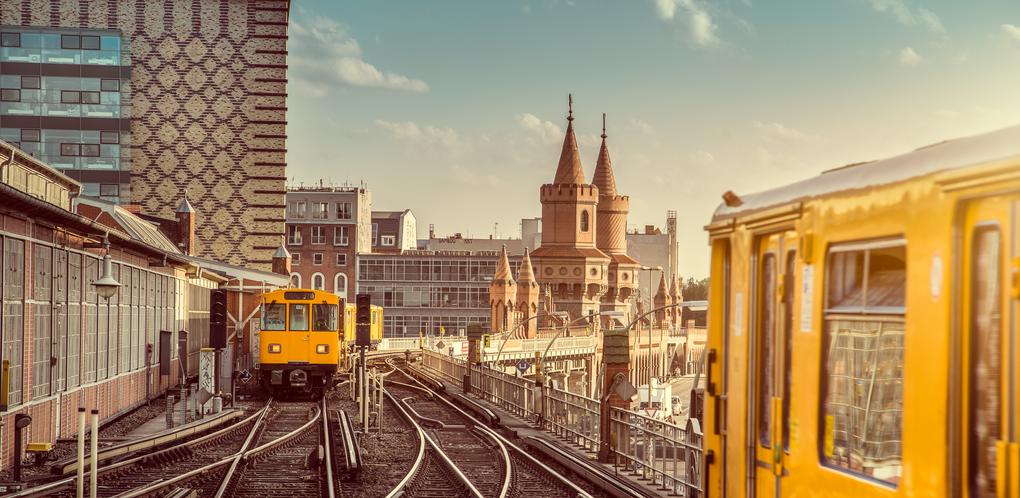
Berlin is also an edgy center for avant-garde work in music, the visual and performing arts, where nightclubs like the legendary techno dance hall Berghain are packed with partygoers until dawn.
The past is never far from sight and monuments like the Holocaust Memorial and Berlin Wall Memorial dot throughout the city. It is also a city that rebuilt itself with glittering modern architecture like the striking modernist Berliner Philharmonie concert hall with its swooping roof lined in shimmering gold. Shaped by a turbulent past, Berlin never takes itself for granted, and visitors will find a relaxed, fun-loving spirit.
Top 5 Reasons to Visit Berlin
1. History Lives
Berlin's origins date back to the 13th century. It became a central focal point during World War II, but has since taken on new meaning in the modern era as a symbol of Germany's reunification. Centuries of history live in structures like the iconic Brandenburg Gate, built in 1791 in the ornate baroque style.
2. A Vast and Vibrant Arts Scene
Whether tastes run to contemporary or classical work, there is something for everyone in Berlin's art scene. You can get your fix of museums in one fell swoop at the Museumsinsel, incorporating five museums on the northern part of Spree Island in the city's north end and showcasing 6,000 years of art history from around the globe.
3. Stay Out All Night
There are basement bars showcasing punk bands, cabaret shows, massive Biergärten, and industrial dance caves like Berghain and Panorama Bar, housed inside a former power plant with world-renowned DJs spinning the music. Drinks are served until the last patron goes home, which essentially means that they seldom close.
4. Plenty of Green Space
There is a great deal of green space available to explore in Berlin, where almost a fifth of the city is planted with trees. There are over 2,500 parks and gardens, such as Viktoria Park with its hilltop monument. Berlin may not seem like a haven for beach lovers, but there are many places for so-called "wild swimming" in lakes like the Tegeler See in the north end of the city.
5. It's a Party Waiting to Happen
Despite all the high culture and the weight of history - or perhaps because of it - Berliners don't take themselves too seriously. The number 10 tram line is renowned for erupting into spontaneous partying in the wee hours when revelers are on their way home from the clubs. It's not uncommon for singing, dancing, and drinking to take place anywhere, anytime in Berlin.
What to do in Berlin
1. Brandenburger Tor: Symbol of Freedom
The Brandenburg Gate is Berlin's most preeminent tourist spot. Until the fall of the Berlin Wall in 1989, the monument stood at the border of a divided city. Now just a short walk from the Memorial to the Murdered Jews of Europe, it is a symbol of unity. It serves as a glorious gateway to the green alleys of Tiergarten, and offers the perfect backdrop for civic gatherings, from grassroots protests to national celebrations.
2. Reichstag: 360 Degrees of Berlin
Just steps from the Brandenburg Gate lies the Reichstag, the home of the German Parliament. Consumed by fire in a 1933 and almost totally destroyed during World War Two, the Reichstag remained closed until 1999. Today, tourists can book a visit to the reopened Parliament, and climb up the new glass dome - a symbol of national reunification - for a panoramic view of Berlin.
3. Museumsinsel: An Island of Wonder
As Berlin's Spree River runs through the packed city center, it is briefly separated by the regal Museum Island. Five of the world's greatest museums are found here, with highlights from their collections including the original Pergamon Altar and the Ishtar Gate of Babylon. The Berlin Cathedral, a great symbol for the city and an architectural wonder in itself, also towers over this island of art and culture.
4. East Side Gallery: Images of Reunification
The East Side Gallery is the longest stretch of the Berlin wall still standing -- a symbol of cold war oppression turned international symbol of freedom. Covered with paintings by artists from all over the world, it stands between two of Berlin's most beloved neighborhoods, Kreuzberg and Friedrichshain. The gallery pieces together Berlin's political and cultural evolution throughout the 20th century, and as it continues today.
5. Tempelhofer Feld: Airport turned Recreation Park
Tempelhof Park is nestled between the districts of Neukölln and Schöneberg in the south of Berlin. The former airport closed in 2008, and the vast open space was soon reclaimed by the city and opened to the public. This is where everyone comes to play, free to walk the massive runways, picnic on the grassy plains, and gawk at the eerily abandoned airport building, all with views of the iconic Berlin TV tower in the distance.

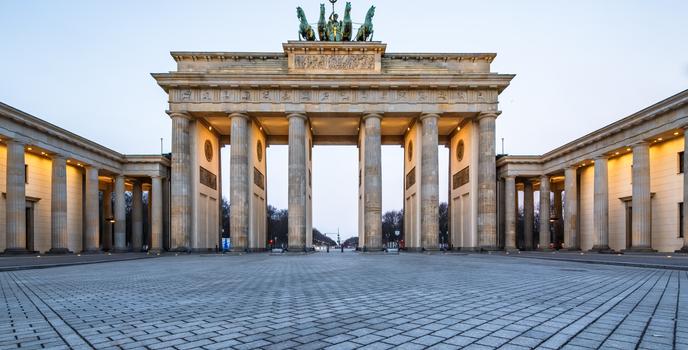






1. Brandenburger Tor: Symbol of Freedom
The Brandenburg Gate is Berlin's most preeminent tourist spot. Until the fall of the Berlin Wall in 1989, the monument stood at the border of a divided city. Now just a short walk from the Memorial to the Murdered Jews of Europe, it is a symbol of unity. It serves as a glorious gateway to the green alleys of Tiergarten, and offers the perfect backdrop for civic gatherings, from grassroots protests to national celebrations.
2. Reichstag: 360 Degrees of Berlin
Just steps from the Brandenburg Gate lies the Reichstag, the home of the German Parliament. Consumed by fire in a 1933 and almost totally destroyed during World War Two, the Reichstag remained closed until 1999. Today, tourists can book a visit to the reopened Parliament, and climb up the new glass dome - a symbol of national reunification - for a panoramic view of Berlin.
3. Museumsinsel: An Island of Wonder
As Berlin's Spree River runs through the packed city center, it is briefly separated by the regal Museum Island. Five of the world's greatest museums are found here, with highlights from their collections including the original Pergamon Altar and the Ishtar Gate of Babylon. The Berlin Cathedral, a great symbol for the city and an architectural wonder in itself, also towers over this island of art and culture.
4. East Side Gallery: Images of Reunification
The East Side Gallery is the longest stretch of the Berlin wall still standing -- a symbol of cold war oppression turned international symbol of freedom. Covered with paintings by artists from all over the world, it stands between two of Berlin's most beloved neighborhoods, Kreuzberg and Friedrichshain. The gallery pieces together Berlin's political and cultural evolution throughout the 20th century, and as it continues today.
5. Tempelhofer Feld: Airport turned Recreation Park
Tempelhof Park is nestled between the districts of Neukölln and Schöneberg in the south of Berlin. The former airport closed in 2008, and the vast open space was soon reclaimed by the city and opened to the public. This is where everyone comes to play, free to walk the massive runways, picnic on the grassy plains, and gawk at the eerily abandoned airport building, all with views of the iconic Berlin TV tower in the distance.








Where to Eat in Berlin
Berlin offers a burgeoning multicultural foodie scene, including fine dining like Les Solistes at the new Waldorf Astoria in Charlottenburg. At the other end of the scale, there are many coffee houses like the Café Einstein Stammhaus where breakfast or lunch can be purchased for under EUR10. There's an exciting street food scene to be found largely in Kreuzberg's Markthalle Neun, featuring pop-up restaurants serving gourmet fare along with the ubiquitous Bockwurst and Bratwurst, and the Döner kebab, a variation on the Turkish-style kebab unique to the city. Expect to pay around EUR2 for sausage and bread from a street vendor and EUR3-4 for a kebab.
When to visit Berlin
With its temperate climate, Berlin is packed with tourists in summer, and high season runs between May and September. Many people come to Berlin to take part in the city's renowned cultural events, such as Berlin Fashion Week, which takes over the city twice a year in January and July, or the Berlin International Film Festival in February.
How to Get to Berlin
Plane
Berlin is currently served by two airports, Schönefeld Airport (SXF) and Tegel Airport (TXL). Schönefeld Airport is located just over 11 miles from the city to the southeast and is used largely by charters, along with a few major carriers like Aeroflot and TAP Portugal. Tegel Airport is just over seven miles from the city center. The S-Bahn, subway, and buses all connect Schönefeld Airport to the city, while people arriving at Tegel can take the TXL Express bus into town. Ticket prices start at EUR3.30 for two hours. Airport Berlin Brandenburg Willy Brandt (BER) is scheduled to replace both existing airports, with an opening that is now set for 2018.
Train
Most long-distance trains arrive at Berlin Hauptbahnhof, with the exception of the night trains from Moscow and Kiev, which arrive at Berlin Lichtenberg station in the northeastern part of the city. Located north of the government quarter, Berlin Hauptbahnhof connects to the city's S-Bahn trains and the U55 subway line.
Car
The Bundesautobahn 10 or Berliner Ring circles Berlin's center, more or less, and connects with major routes in all directions. These include the 11 from the north, the 24 from the northwest, 12 that comes from the east, and 13 and 9 from the south.
Bus
The Zentraler Omnibusbahnhof (ZOB) is located in the Charlottenburg neighborhood of Berlin, and is open seven days a week. From here, travelers can get connections to the subway line U2 and the city center. Major bus companies servicing the city include DeinBus, FlixBus, Megabus, and Eurolines.
Airlines serving Berlin
Where to stay in Berlin
Charlottenburg-Willmersdorf - this is the upscale part of the city, home to many fine dining restaurants like Glass Berlin. There are a number of gardens and historic buildings, including Schloss (Palace) Charlottenburg, the city's largest castle, which is surrounded by lush gardens.
Popular Neighborhoods in Berlin
Friedrichshain - home to the Berlin Wall Memorial, this part of the city is now a haven for hipsters and art lovers, and offers a trendy nightclub scene. Along a one-mile stretch of Mühlenstrasse, the Berlin Wall has become the East Side Gallery, the world's largest outdoor collection of murals.
Kreuzberg - this is the bohemian part of a city already notorious for its bohemian soul. Here, Checkpoint Charlie, the famous Cold War crossing point between the divided Germanys, sharply contrasts the present-day streets covered in street art.
Mitte - central Berlin is where you'll find architectural icons like the imposing Brandenburg Gate and the Reichstag, along with with many of the city's most iconic attractions. Alexanderplatz was the center of East Berlin, and Friedrichstrasse offers many upscale stores and cocktail bars.
Where to stay in popular areas of Berlin
Most booked hotels in Berlin
How to Get Around Berlin
Public Transportation
There is an extensive network of buses, trains - which include the above-ground S-Bahn and U-Bahn subway - and trams, along with ferries across Berlin's network of rivers, lakes, and canals. The basic fare of EUR3.30 is good on all ground systems for a two-hour period. The Berlin WelcomeCard is available to tourists and starts at only EUR19.90 for unlimited transport access for 48 hours for one adult and up to three children, along with discounts of 20 to 50 percent on a variety of tourist attractions.
Taxi
A taxi from the airport to the center of Berlin will cost around EUR20-25 and take 20-30 minutes. Taxis are plentiful and the fares are regulated and standardized on a sliding scale, with a minimum charge of EUR3.90. A short trip of about two miles will cost roughly EUR10, while a 10-mile trip will run about EUR31.
Car
Berlin's public transit system is efficient and reliable, making a car rental a luxury. Major car rental companies like Avis, Budget, Enterprise, Europcar, Hertz, and Sixt are available and located outside Terminal E at Tegel Airport and various locations at Schönefeld Airport. A typical car rental starts at EUR23-28 per day. Large parking lots are available in the downtown area. City parking lot fees run EUR1.00-4.00 per hour, with a daily maximum of between EUR10.00-35.00.
Best car hire deals in Berlin
Supplier choice
5 Adults, 5 Bags
RM 283/day
Compact
4 Adults, 2 Bags
RM 326/day
The Cost of Living in Berlin
Shopping Streets
During the Cold War, Kurfürstendamm in Charlottenburg was the retail hub of West Berlin and today, along with Friedrichstrasse, continues to offer a variety of shopping experiences, including luxury designer goods. KaDeWe, Europe's largest department store, is a must-see on any Berlin shopping excursion, offering an abundance of retail space and over 370,000 items for sale. Hackescher Markt is where to look for more reasonably priced clothing stores, extending north through Rosenthaler Strasse and Münzstrasse.
Groceries and Other
There are basically two kinds of grocery stores in Berlin: discount chains like Aldi, Lidl, and Netto, and more expensive options like Kaisers, Rewe, and Kaufland. Expect to pay EUR1-3 for bread and around EUR2 for six eggs. Specialty and imported items can be found in the extensive food section at KaDeWe and Galeries Lafayette.
